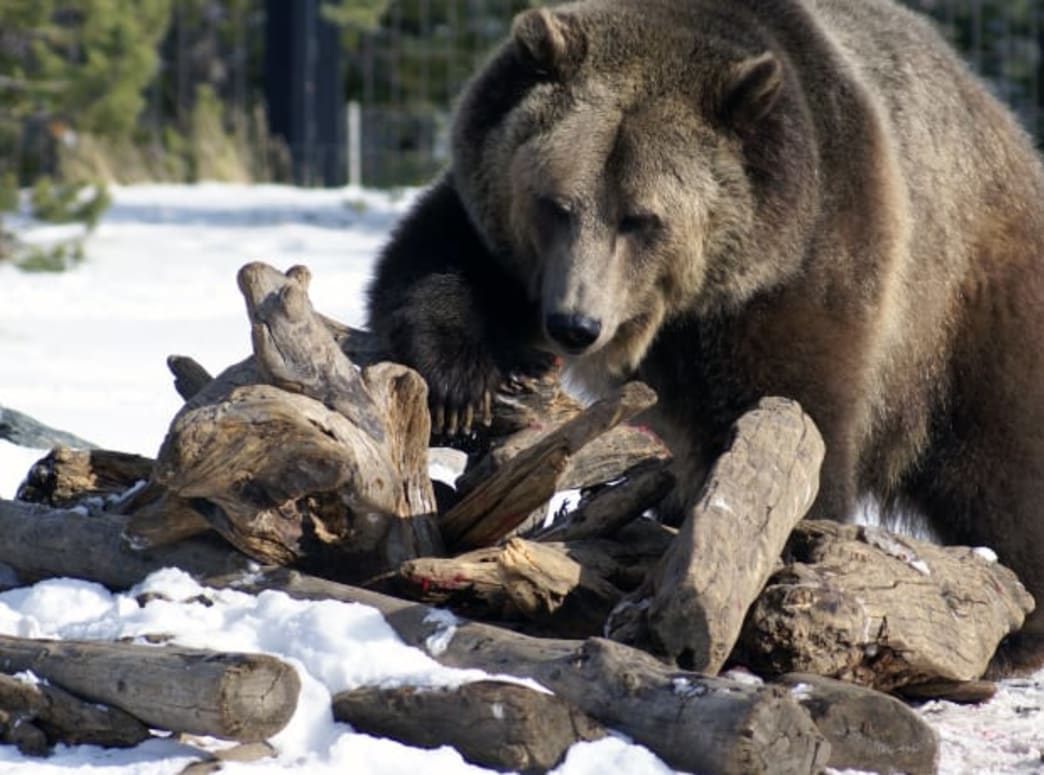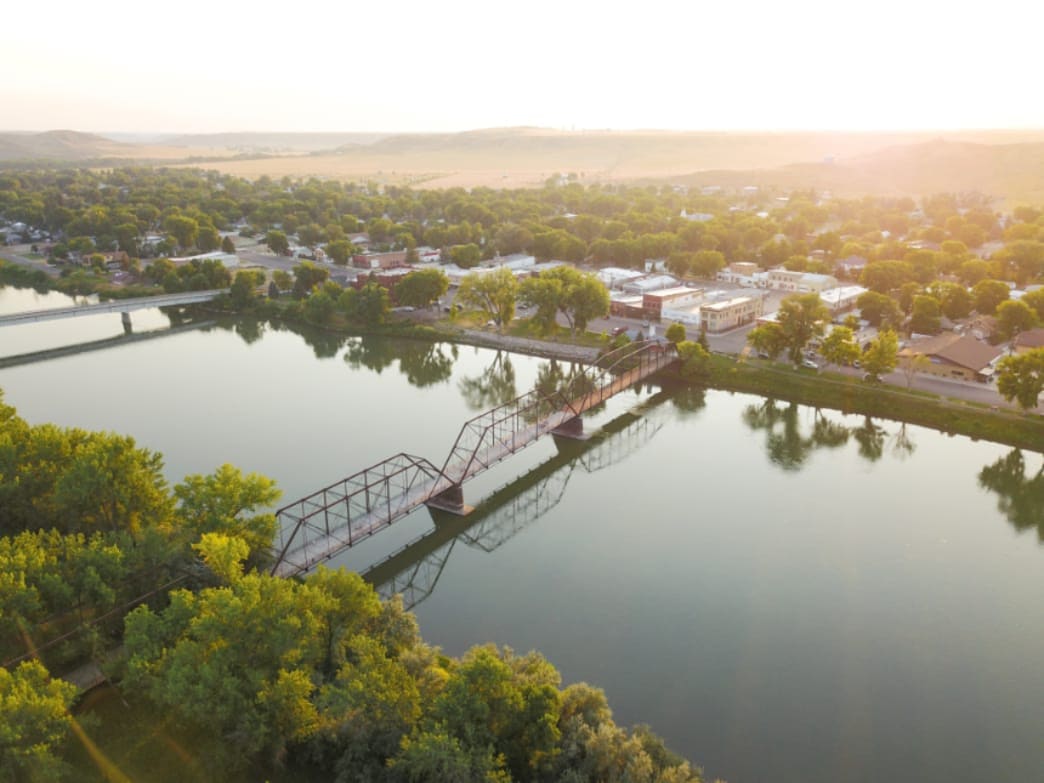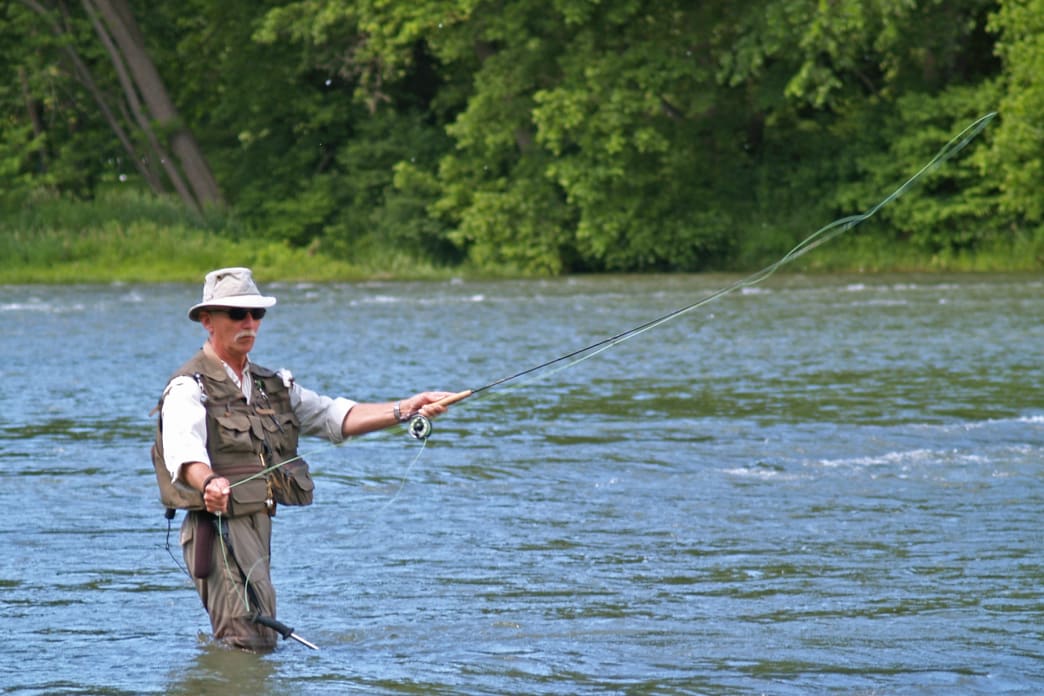Is Your Gear Stronger Than a Grizzly?

It’s the job of some captive bruins in Montana to destroy coolers and garbage cans—all in the name of keeping people safe in bear country.
The Grizzly and Wolf Discovery Center, near West Yellowstone in Montana, houses eight grizzlies, who take turns roaming the grassy slopes and fishing trout from the pond in their 1.5-acre enclosure. The facility is the only one in North America approved to test coolers, bear canisters, trash cans, and even the occasional Kevlar backpack for bear-resistance. Almost none of those items go up against the bear known as Sam, an Alaskan brown bear that, at over 1,000 pounds, outweighs his counterparts by hundreds of pounds. Randy Gravatt, who has run the tests since day one, says almost everything buckles under Sam’s weight. But Jon Rayeski, senior industrial designer for Otterbox, wanted to give it a go.
On an April morning, their toes and fingers numbing, both watched as Sam lumbered out toward a 45-quart cooler. Empty, it weighs 25 pounds, and it was loaded with pungent, noisome fillings: fish, peanut butter, meat, jam, dog kibble, honey, and kipper snacks to keep him motivated.
“He picked up it up like a tennis ball,” Rayeski says. For the hour-long test, he watched as Sam pounded on the cooler like he was giving it CPR, and even squeezing all four paws on to stand atop it. “It was pretty amusing,” he says, “and a little stressful.”
Gravatt says even 15 years in, he’s surprised by the bear’s strategies. Public visitors watch, and when the bear busts its target open, he says, they cheer. Almost half the time, the bears win. And when they do, we all win.
As campgrounds in Yosemite and Yellowstone national parks and other national forests in bear country have begun requiring visitors to better secure their food supplies, coolers certified to come along have been put to the test here. Maybe hanging a bear bag or packing a canister has become routine in the backcountry, but frontcountry camping calls for precautions, too, and these aim as much at keeping campers safe (and fed) as they do to keep more bears alive (and unfed). Bear-resistant items prevent bears from associating humans with food.
The hope is that smarter designs and a savvier public come full circle. The Grizzly and Wolf Discovery Center houses bears that had frequented towns and campgrounds and would have been euthanized if they weren’t moved into captivity. Sam was orphaned as a cub and grew up being hand-fed at a fishing village. Wildlife managers decided he’d become too habituated to humans and their food to continue living there.
Each year, the center, which is full, get calls asking if they have room for more bears. And Gravatt trains his bears for their work. He gives cubs a cooler of goodies zip-tied shut, whetting their appetite for when they’ll face a cooler secured with a padlock, the only way of sealing it for any amount of time against a bear. The idea is that with tougher devices and humans better trained to remove and secure temptations, fewer bears may begin seeing a cooler as a snack bin and frequenting campsites searching for them. Instead, they’ll get to live out their days in the wild.
Bears get an hour of biting, chewing, thumping, and pulling before a product is considered to “bear resistant,” according to protocol developed by the Interagency Grizzly Bear Committee. The committee formed in 1983 to help grizzlies return to the Lower 48 states and includes representatives from the U.S. Fish and Wildlife Service, state wildlife agencies, and federal land management agencies. Grizzlies, with their namesake silver-tipped fur, a hump at their shoulders that holds a mass of muscles, and lengthy claws, do the testing. While campers will more often encounter black bears, if a cooler can outlast a grizzly, the committee surmises, it’ll likely survive a smaller bear, too.
If the bear makes a quarter-inch hole in a cooler or canister, the product has failed. Still, both the committee and Gravatt note, it’s “bear-resistant,” not “bear-proof.” Given enough time, they’re not sure much would hold-up. When testing started 15 years ago, about 5 percent of what was submitted to the bears stayed intact.
“It was almost a joke,” Gravatt says. “But understandably so—manufacturers had no idea the strength of a bear.”
Now, the number is closer to 60 percent, Gravatt says. The center also tests bear canisters, and Gravatt estimates that pass rate at closer to 40 percent — perhaps a problem that comes with prioritizing light-weight materials. He’s seen them tear through plastic layers and shred Styrofoam linings. The grizzlies face off with about 70 products in a season that runs from April to October.
“By the end of the year, the bears are like, ‘Man, we’ve seen way too many coolers. We don’t want to work on another cooler,’” Gravatt says. At that point, test subjects may sit in the habitat waiting out visits by multiple bears before it racks up the required hour of test time.
He estimates around 750 products have been tested in the 15 years since the center began running tests.
One of the first lessons learned when Otterbox sent its coolers to the bears was that the latches they’d designed for quick access gave the bears that, too. They now sell a kit with locks and removable metal latch covers.
“If they found something that moved a little bit, they would just home in on that and hammer it under they broke through,” Rayeskisays.
Presented with the 25-quart cooler, the bears identified a manufacturing defect. After a bear chewed through the bottom of the cooler, engineers measured it with calipers, and realized the injection molding wasn’t filling in properly. Once that system was tweaked, the coolers passed.
“It’s great for animals themselves because it stimulates their brains, because it gives them a puzzle to solve,” he says, “But yeah, never in my life did I think I’d be throwing one of my products into an enclosure with five grizzly bears and see how long it would last.”
Written by Elizabeth Miller for Backpacker and legally licensed through the Matcha publisher network. Please direct all licensing questions to legal@getmatcha.com.



Comments